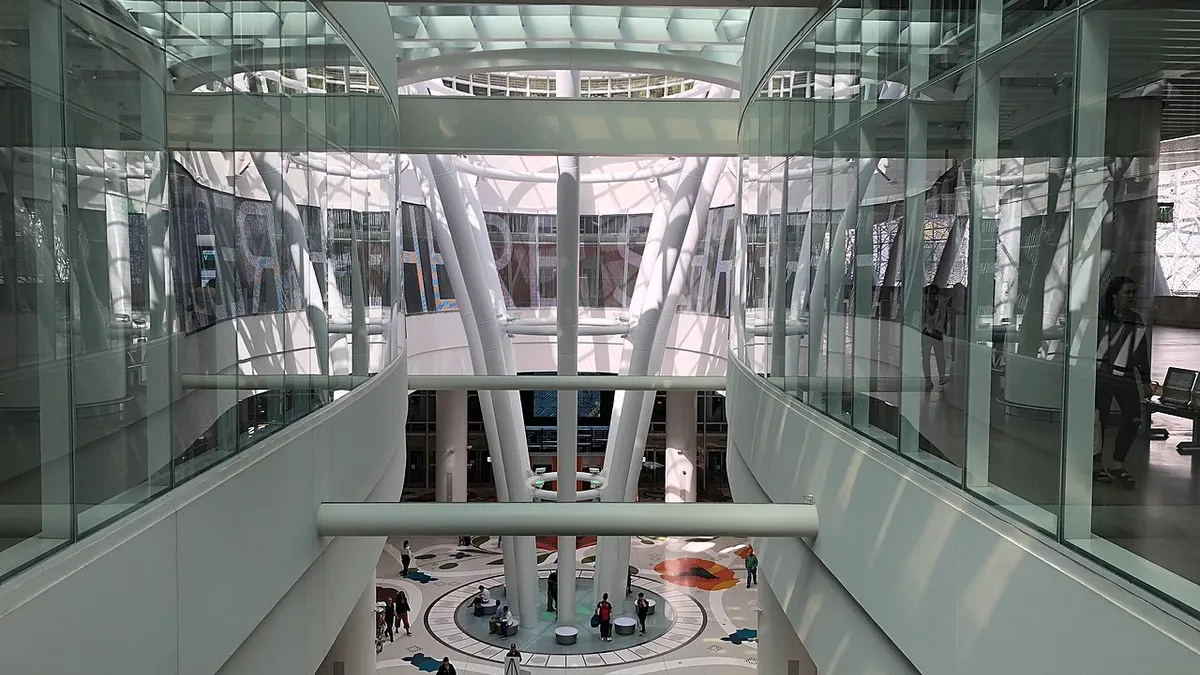UPDATE: October 16, 2018: The Transbay Joint Powers Authority announced last weekend that construction crews had completed shoring up the sections of the Salesforce Transit Center where two cracked steel beams were found last month. This allows the authority to re-open one closed street next to the center, but the center is still closed temporarily.
The four-level shoring system is designed to take the weight off the two cracked beams so that technicians can take samples from the beams and send them off for analysis and, ideally, a determination that will explain the reason for the fissures. The authority expects an answer from an independent lab in New York the first week in November, and then, in coordination with the Metropolitan Transportation Commission, engineers will come up with a permanent fix.
Mark Zabaneh, the authority's executive director, said the agency intentionally selected a testing group that was not involved in the design or construction of the center. The authority maintains an updated document database on transit center inspections, design, reports, contracts and other related documents that is fully accessible to the public.
Dive Brief:
- The Transbay Transit Center, also known as the Salesforce Transit Center — where two cracked structural steel beams were discovered last month — is not anchored in bedrock and is, essentially, according to columnists for The San Francisco Chronicle, "a 1,500-foot-long barge floating atop a lake of deep mud."
- Mark Zabaneh, executive director of the Transbay Joint Powers Authority, the center's managing agency, told those gathered at a press conference that the force of water pressure underneath the building's foundation is strong enough to make the structure "buoyant." This is despite the building's 25,000 tons of steel and 200,000 cubic yards of concrete. So, instead of securing the structure into bedrock, he said the transit center is "tied down" into the mud below. Crews, according to The Chronicle, used 1,896 80-foot-long anchors to achieve this. Zabaneh said cracks in the steel beams were not a result of any potential building rise.
- Designers of the transit center's neighbor, the Millennium Tower, also chose not to anchor into bedrock but, because of the concentration of the high-rise's weight on a relatively small footprint, the building is sinking rather than floating.
Dive Insight:
Some local officials have called for a halt of the authority's plan to bring train services into the transit center until experts from outside the area can be brought in to assess the existing structure, expressing doubt that San Francisco builders and engineers can handle the job. However, Gerald Cauthen, the former deputy director of the transit center project, told KPIX that the new terminal structure was designed to accommodate trains. If that doesn't happen, he said the project would be "nothing more than a $2 billion bus stop."
Although the majority of construction was completed in August, crews are still scheduled to work on the interior through 2019, building out retail and office space according to tenant specifications. Most of this activity is limited to the western end of the center. The transit center's cracks are located at the eastern end of the complex.
Millennium developers claim that construction of the transit center and the accompanying dewatering destabilized the tower's soil and caused excessive sinking. Currently, the building has sunk about 16 inches since it was completed in 2009, and this has sparked homeowner and other legal actions against the Millennium and others, including the authority. The authority maintains that the building's settling problems are a result of not anchoring into bedrock.
The week before the discovery of the cracked beams, a San Francisco Superior Court judge ruled that the authority must pay the Millennium's legal bills as it defends itself against homeowner and other claims in the matter. As it turns out, the authority and Millennium developers entered into an agreement almost 10 years ago that gave transit center construction crews the right to use Millennium property for its monitoring equipment. As part of the same agreement, however, the authority agreed to pay the Millennium's costs of defending itself against claimed damage to the tower.














